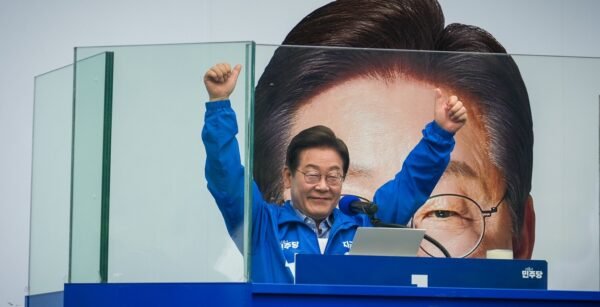Lee Jae-myung: South Korea’s new president has a Trump-shaped crisis to avert

Lee Jae-myung: South Korea’s New President Faces a Trump-Shaped Crisis
Lee Jae-myung, elected as South Korea’s new president on June 3, 2025, assumes office at a moment of extraordinary domestic upheaval and acute external pressures—most notably, a brewing crisis in relations with the United States under President Donald Trump. The so-called “Trump-shaped crisis” refers to a set of urgent challenges: steep new U.S. tariffs on Korean exports, the threat of reduced American military presence, and the need to recalibrate Seoul’s foreign policy amid intensifying U.S.-China rivalry.
Lee, a populist-leaning progressive from humble beginnings, won a snap election called after the impeachment and martial law crisis under his predecessor, Yoon Suk Yeol. He now leads a deeply divided nation, with a strong mandate but facing a fragile economy battered by political instability, natural disasters, and global trade headwinds.
The Trump-Shaped Crisis: Economic and Security Threats
1. U.S. Tariffs and Trade War
President Trump has announced a dramatic escalation of tariffs on South Korean steel and aluminum (to 50%), on top of existing 25% tariffs on automobiles and 10% on other goods. These measures, set to take effect as Lee is inaugurated, threaten South Korea’s export-driven economy, which is already reeling from declining shipments to both the U.S. and China.
South Korea’s automotive exports to the U.S. have plunged over 30% year-on-year, and the central bank has slashed growth forecasts to just 0.8% for 2025, citing the likely impact of Trump’s tariffs and ongoing domestic turmoil.
2. Security Alliance Under Strain
Trump’s administration is also signaling a possible reduction in the U.S. troop presence in South Korea, raising anxieties about the future of the security alliance that has underpinned regional stability for decades.
Lee has pledged to maintain the U.S.-Korea alliance as a “fundamental” pillar of Seoul’s foreign policy, but he faces skepticism from both Washington conservatives and progressive factions at home—some of whom want greater autonomy from the U.S.
3. Navigating U.S.-China Rivalry
Trump’s aggressive posture toward China, and his pressure on allies to align with Washington, complicates Lee’s aim to restore and balance relations with both Beijing (South Korea’s top trading partner) and Washington.
Lee has criticized the previous government for neglecting ties with China and is expected to pursue a more pragmatic, less ideologically rigid foreign policy.
Lee’s Strategy and Constraints
Emergency Economic Response
Lee’s first act as president is to form an emergency task force to address the trade and economic crisis.
He has promised patience and pragmatism in negotiations with Trump, resisting calls for hasty deals and emphasizing the need to assess South Korea’s leverage before making concessions.
Domestic Policy Focus
Lee’s economic agenda includes stimulative fiscal policy, investment in artificial intelligence, a four-and-a-half-day workweek, and targeted tax relief for families.
He is expected to use his party’s majority in the National Assembly to push through expansionary spending and support for households and small businesses.
Diplomatic Balancing Act
While Lee has signaled willingness to make concessions to Trump to secure the best outcome for South Korea, he is also determined not to alienate China or Russia, aiming for a pragmatic, non-aligned approach.
He faces limited diplomatic options, given South Korea’s vulnerability to external shocks and the volatility of global markets.
Lee Jae-myung’s presidency begins at a crossroads for South Korea. He must stabilize a battered economy, heal deep political divisions, and avert a crisis in the U.S.-Korea alliance triggered by Trump’s protectionist turn. His ability to navigate these challenges—through pragmatism, negotiation, and careful balancing of global relationships—will define his leadership and South Korea’s trajectory in the coming years.

